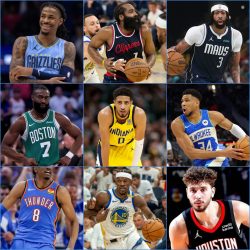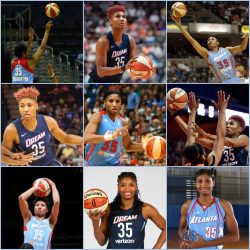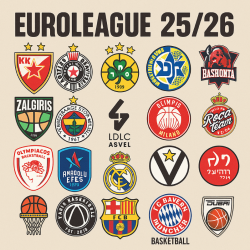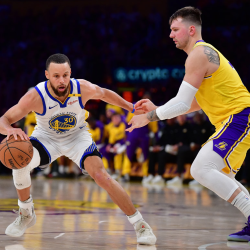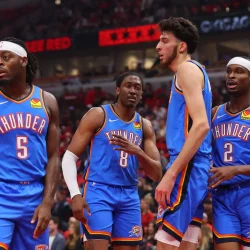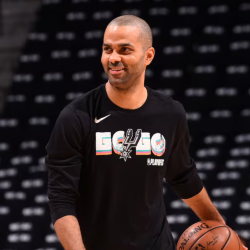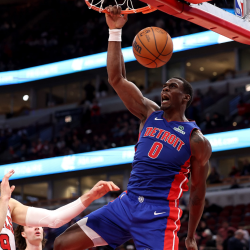 The summer of 2025 has been a reality check for women’s basketball. A record‐setting All‑Star Weekend, a pending $2.2 billion media deal, and expansion franchises in five new cities suggest the league is booming. Yet the most shared image from that showcase was aa locker room full of stars wearing black shirts that read “Pay Us What You Owe Us.”
The summer of 2025 has been a reality check for women’s basketball. A record‐setting All‑Star Weekend, a pending $2.2 billion media deal, and expansion franchises in five new cities suggest the league is booming. Yet the most shared image from that showcase was aa locker room full of stars wearing black shirts that read “Pay Us What You Owe Us.”
Napheesa Collier, the game’s MVP, the leading candidate for the 2025 MVP trophy and a vice‑president of the players’ union, explained the mood: “The players are what is building this brand, and we feel like we’re owed a piece of that pie that we helped create.” That rallying cry has reignited debate about how the WNBA earns revenue, where it goes, and whether the athletes who drive eyeballs are getting a fair cut.
With so many bad faith actors commenting on TV and social media, not to mention the thinly veiled misogyny and racism, we’ll actually look at the data and facts. In that we’ll consider how WNBA makes money, compare how the WNBA revenues are split with their players and evaluate the WNBA as an investment, like one would view the stock of a high-growth tech company.
The WNBA Salary Gap in Plain Numbers
Average pay in the WNBA is roughly $119,000, with a maximum of $249,244. By contrast, the NBA league minimum is $1.27 million. NBA superstars will cross $50 million per season. Harvard economist and Nobel laureate Claudia Goldin called the disparity “embarrassing,” writing in the New York Times that WNBA players should earn “roughly one‑quarter to one‑third of the average NBA salary to achieve pay equity.” If that benchmark were met today, the typical WNBA check would be in the $2 million range.
The players’ case rests on revenue share, not direct comparison to men’s basketball. In the NBA, about 50 percent of league income flows to athletes. Sports‑management professor Nola Agha told Yahoo Sports, “Even without knowing the exact revenues of the WNBA, we know they’re certainly not making even close to 50 percent, so they’re absolutely underpaid.” Economist David Berri estimated that league revenue will exceed $500 million in 2026 once the new media deal starts. A 50 percent split would raise the average salary to about $1.5 million for the 168 rostered players that year.
Players have also pointed to earlier generations of NBA data. WNBPA president Nneka Ogwumike noted, “As players, we never get to see the numbers. We just want to see the receipts.” Without verified ledgers, the union relies on outside analyses that suggest athletes received only 9 to 11 percent of basketball‑related income in 2024.
“PAY THEM!”
Fans letting the league know after the WNBA All-Star Game ️ pic.twitter.com/fjk4M5yWLP
— Yahoo Sports (@YahooSports) July 20, 2025
How the WNBA Makes Money
Understanding WNBA finances means tracing four primary streams: television, sponsorship, ticketing, and expansion fees. The 11‑year national media agreement averaging $200 million annually will dwarf the current $60 million contract. Local television packages, still modest, are beginning to rise in big markets like Las Vegas and New York. Sponsorship is booming as well. The Las Vegas Aces sold more than $3.8 million in branded jersey inventory during a single photo campaign, and Skims became the league’s official underwear partner in a multimillion‑dollar deal. Team revenues are following. Forbes placed 2024 income at $226 million league‑wide, up from $102 million in 2019.
Expansion can create its own windfall. The Golden State Valkyries paid a $50 million entrance fee, project $75 million in first‑year revenue, and now tops the entire WNBA in terms of valuation at $500 million according to Sportico. numbers that recalibrate franchise values almost overnight. Commissioner Cathy Engelbert told CNBC that “average franchise valuation has grown tenfold in the past four years.” Investors seem to agree: the Los Angeles Sparks fetched a WNBA‑record valuation when a new ownership group bought control in April.
Sports wagering is another growing stream. Several franchises now run on‑site betting lounges and the league recently approved a pilot program that streams real‑time odds directly into team apps. Online operators such as 1king casino have reported double‑digit increases in WNBA handle this summer, proof that fan engagement carries on well after the final buzzer.
On the cost side, the league approved two years of full‑time charter flights at an estimated $50 million, a line item that immediately showed up as operating loss in internal projections. Players welcomed the upgrade but questioned why an expense equal to about 10 percent of revenue would be framed as a budget crisis. Angel Reese called the league’s opening proposal on revenue share “disrespectful,” while Breanna Stewart labeled the first bargaining session “a wasted opportunity.”
So Are The WNBA Players Underpaid?
When Steph Curry recently claimed that NBA players remain under‑compensated because they cannot own stakes in their teams, WNBA stars nodded in agreement. Their own league is surging: average TV audiences jumped 83 percent this season, merchandise sales set monthly records in May and June, and a new 11‑year media contract will pour roughly $200 million a year into league coffers starting in 2026. Yet WNBA athletes collectively take home only about 10 percent of total revenue, far below the 50‑percent splits negotiated in every other major U.S. league. That gap, not a direct comparison to NBA paychecks, underpins the union’s push for better terms. The current collective bargaining agreement, signed in 2020 and slated to run through 2027, includes an opt‑out clause that the players activated this spring. With talks now underway, five core goals appear on the table:
- Higher revenue share. Athletes seek a path from roughly 10 percent toward the 50 percent norm in other U.S. leagues.
- Equity stakes. Collier and others have floated fractional ownership or profit‑sharing so players can benefit from soaring franchise valuations.
- Smoother schedule and travel. Charter flights are a start, yet players still want guarantees on rest days and medical staffing.
- Expanded international income. The new TV deal left some overseas streaming rights untapped; players argue those dollars should fund salaries.
- Transparency. As Kelsey Plum put it, “We have a long way to go” without clearer accounting.
During All‑Star weekend, the public display of unity shifted pressure onto owners. Fans inside Gainbridge Fieldhouse chanted “Pay them!” as Engelbert handed Collier the MVP trophy. Even league partners are talking. Former NBA union chief Tamika Tremaglio says the W is at “a once‑in‑a‑generation inflection point” with sponsors hunting for inventory.
A League is at a Flashpoint
The WNBA’s financial picture is no longer hypothetical. Attendance is up, social media impressions have doubled, and a new television deal will pump hundreds of millions into league coffers. At the same time, players still earn the smallest revenue share in modern North American sports. Economists from Harvard to Southern Utah describe that gap as both unsustainable and unfair. Owners counter that charter flights, marketing costs, and investment in expansion justify present pay scales. Negotiations over the next year will reveal whose math carries the day.
Whatever the final split, the debate itself signals progress. Two decades ago, the idea of a $200 million national rights package for women’s basketball felt distant. Today that contract is signed, and the question is how to divide the proceeds. The slogan “Pay Us What You Owe Us” has opened up more curiosity over league ledgers.. If transparent data emerge and both sides adopt a long‑term view of the league as an investment, the WNBA can reward its athletes, maintain its explosive growth, and ensure that everyone involved is happy to be with the WNBA. The world is watching to see whether basketball’s fastest‑rising league will also become its fairest.




